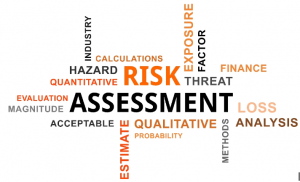Assessing the potential risks that your network may come across is one of the many responsibilities a network service provider should offer. Your organization’s security practices need constant monitoring. Performing audits of procedures and security policies are just as critical as having your network undergo a network risk assessment.
Understanding Network Risk Assessment
An external network risk assessment is the very first step in pinpointing any possible network security risk on your company’s system. This is to immediately ferret out network problems especially that the general public can see them via the Internet. The same method applies to the internal network risk assessment. Only, it is conducted from the view of somebody who can access your internal network.
There are different commercial techniques and tools, along with various freeware that can help check your network. All these are designed to give you a clearer picture of the possible risks that your organization may face. Ideally, the testing methodology of a network assessment must address some key areas like:
• The topology of the external network to identify the improper configuration of the firewall.
• Rules and configuration of router filtering.
• Weak authentication mechanisms. (When unattended, this may lead to an attack on your dictionary-based authentication.
• Vulnerable email and improperly configured DNS servers.
• Database with wrong configurations.
• FTP servers
• SNMP checks
All in all, a network risk assessment must have four various phases: the discovery, the device profiling, the scanning, and the validation. Here’s a quick rundown on all these phases.
Discovery
In this phase, the fingerprint of a targeted network segment is established. All active device addresses, alongside its associated UDP, TCP, and other added network services can be accessed internally in the network. Both passive and active sniffers are involved in collecting network traffic for careful analysis and parsing. The details obtained from this phase must include authentication credentials, identification of active hosts, an indication of a possible computer virus, and other forms of vulnerabilities. Popular tools used in this phase include Nmap, Ethereal, Firewalk, and hping.
Device Profiling
From the information gathered in the discovery phase comes device profiling. At this stage, you can analyze and check a list of network services that you can access. You can also go through IP stack fingerprints and access known network architectures so you can easily categorize the roles each specific device plays across your whole network infrastructure.
Scanning
The phase tests the identified network service during the first two phases for possible vulnerabilities. These vulnerabilities fall into different categories, including:
• Unauthorized data access;
• System compromise;
• Command execution;
• Information disclosure;
• Denial of Services.
However, in some cases, you can also detect and exploit other forms of security risks that are associated with a particular service. You can use these software applications to get you started:
• Nessus: This all-in-one scanning toolkit is one of the most popular choices because of its updated tests for different network services and operating systems.
• Onesixtyone: This SNMP service scanner is a wordlist-based community string testing utility.
• Nixto: Another web server tool designed for vulnerability scanning.
Validation
Once you have completed all the first three phases of the network risk assessment, the final phase is to validate and exploit all your results to check them from the vulnerability scanning phase. Techniques and tests done on this phase are critically specific especially when potential vulnerabilities are detected.
You need to assess your whole network for any possible risk. That is why when you look for network solutions, printers, and copier Mesa equipment maintenance services, you have to go for the right provider who has the right knowledge and tools to help you secure your network.


